From the Silents to Gen-X, experience our history in film.
Before I set out to become a writer, I lived in the world of cinematography. I attended film history and theory classes and even worked on a few simple student films. A giant part of my life revolved around the film world, and I collected a massive library of favorites from across the decades, but soon found that I adored early films beyond almost any others.
From the 1920s to the 1970s, a great change took place in the landscape of American society and in the development of film. They mirrored and affected one another, as the growing popularity of the medium, the impact of World War 2, and a wildly unsteady social landscape all collided on the silver screen.

I’ve set out to capture the best films from 1931 to 2021 in two massive articles, thereby chronicling life from the so-called “Silent Generation”, through the “Baby Boomers”, on to Generation X and the Millennial, and finally into the future of “iGen” and “Generation Alpha”.
Cinema is a remarkable medium for exploring what mattered to people at a specific time, and for understanding the state of the world in an intimate, visceral way. It’s also an important vehicle for change, capable of enriching minds and shifting public discourse away from, or toward, vital topics not otherwise yet within the mainstream.
In this piece, I set out to capture the great landscape of films from the rise of the dominance of sound films (or “talkies”) out of the silent era, and into bold and transgressive films rising through the 1960s until 1971.
This was an era of stark transitions in lifestyle and thought, in worldview and globalization; it was a time of great deeds and miserable follies, of horrors incomprehensible and hope springing eternal. It was the best of times… it was the worst of times, and out of this strange milieu our modern world was born.

I’ve assembled a list of the greatest comedies, dramas, horror classics, science fiction greats, and musical spectaculars of the age, films that would set the stage for everything to come. Check this out, dive on in, watch some of these remarkable films… and keep an eye out for part two, where I dive into modernity!
1931: City Lights
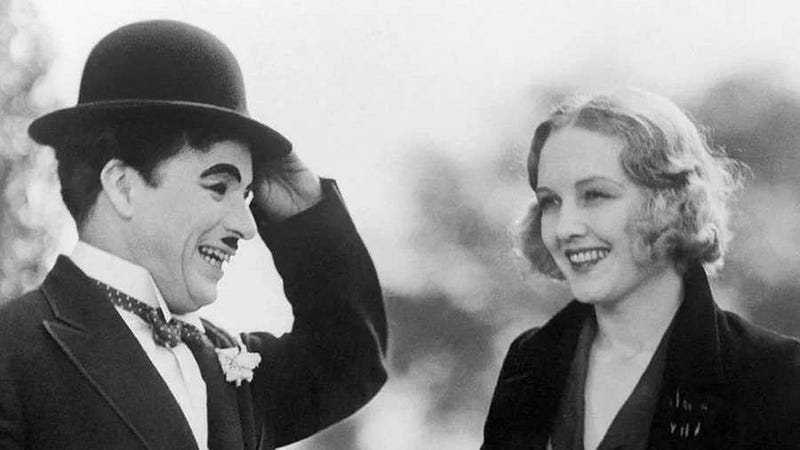
- Director: Charlie Chaplin
- Featuring: Charlie Chaplin, Virginia Cherrill
City Lights is an enduring piece pf comedic genius from that unparalleled savant of the silent age, Charlie Chaplin. The Tramp (Chaplin’s iconic character) falls in love with a blind girl and becomes oddball friends with a millionaire drunkard. Though sound films were becoming a thing by 1928, Chaplin decided to forge ahead with City Lights as a silent film. To accent the action, Chaplin composed his own film score. It was Chaplin’s act of defiance against the loss of a whole style of silent filmmaking, and remains one of his best-loved epics.
In 1934, the Motion Picture Production Code (also known as the Hays Code) was finally enforced in full. The Code, an example of religious intervention for the sake of “morality”, stopped so many powerful stories from being told.
I love pre-code films because they offered such a different view of the world. By the late 1930s, the role of women was frequently reduced to wife, femme fatale, or general airhead — but in the late twenties and early to mid-thirties we saw examples of powerful women leaders in films, characters that were complex and intriguing and very often far surpassing their male leads. Homosexuality, relationships between black and white people, and a whole host of subtlety and innuendo were all banned by the Code, leading to the exclusion of many minority communities from mainstream recognition and acceptance.
Clever filmmakers and writers would find ways around this, but the era of films as a great wealth of social revolution were at an end. Until 1968, when the Hays code was finally decimated for good, the whims of a religious minority held back the cultural growth of the country (and therefore helped to perpetrate widening gaps between races, sexes, and to dampen the growth of gender expression beyond the “acceptable norm”).
Luckily, we still have a huge range of pre-code films to watch and adore — films like City Lights, and some of the other award winners from 1931. Films such as Cimarron, an epic pre-code Western, or A Free Soul with the genius actor Lionel Barrymore. A huge library of these classic films still exist, and their themes and powerhouse scripts make them accessible and fun for modern viewers in a way that films from a decade or two later not always are.
1932: Grand Hotel

- Director: Edmund Goulding
- Featuring: Greta Garbo, John Barrymore, Joan Crawford
Grand Hotel, based on a novel by Vicki Baum, featured the breathtaking acting of an all-star ensemble cast, and went on to win Best Picture. Each actor's story comes to life through their connections with others in the hotel, and the passionate drama of their lives brims over in a dramatic tale of heartbreak and love.
1933: Dancing Lady
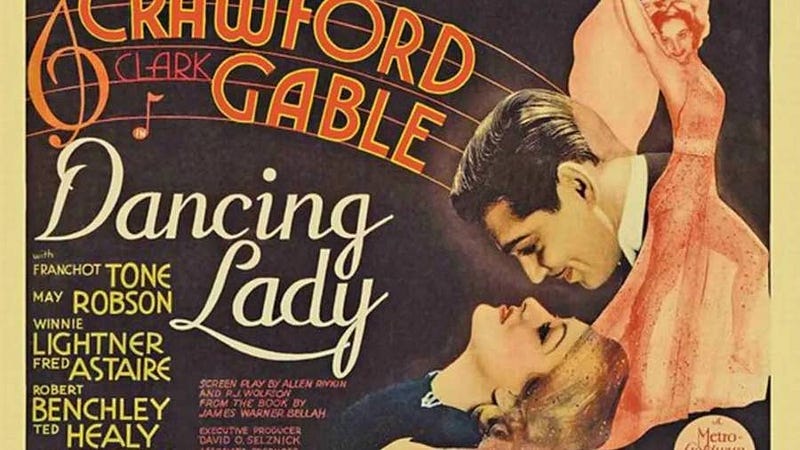
- Director: Robert Z. Leonard
- Featuring: Joan Crawford, Clark Gable
Dancing Lady featured the brilliant acting of Joan Crawford, Fred Astaire, and a young and dashing Clark Gable. A musical drama, the film produced a hit soundtrack and was the debut for dancer Fred Astaire (who appeared as himself). It also featured an early appearance of the comedy trio The Three Stooges. When the Hays Code got its hands on the film, anti-Hitler political commentary inherent in the script was removed.
1934: It Happened One Night

- Director: Frank Capra
- Featuring: Clark Gable, Claudette Colbert
It Happened One Night tells the tale of a spoiled rich girl who tries to make it on her own, and the down-and-out skeezy reporter who she meets along the way. It’s one of the very last comedies produced before the Hays Code came into full enforcement (about four months later) and is widely considered one of the best films ever made, as well as a prime example of the “screwball comedy.”
1935: The Informer
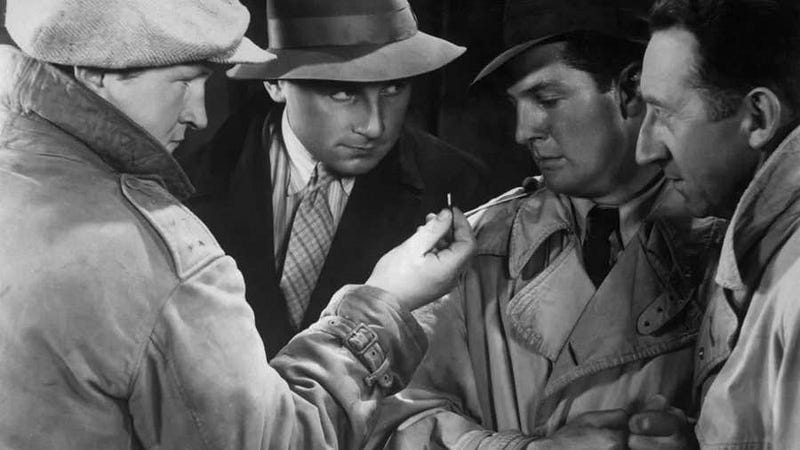
- Director: John Ford
- Featuring: Victor McLaglen, Heather Angel
The Informer deals with the life of a distraught Irish patriot and rebel who’s poor decisions lead him down a dark path. It was adapted from the Liam O’Flaherty novel of the same name. A dramatic and action-packed tale of war and resistance, it was a major award winner and has remained a significant film from the era.

1936: The Great Ziegfeld
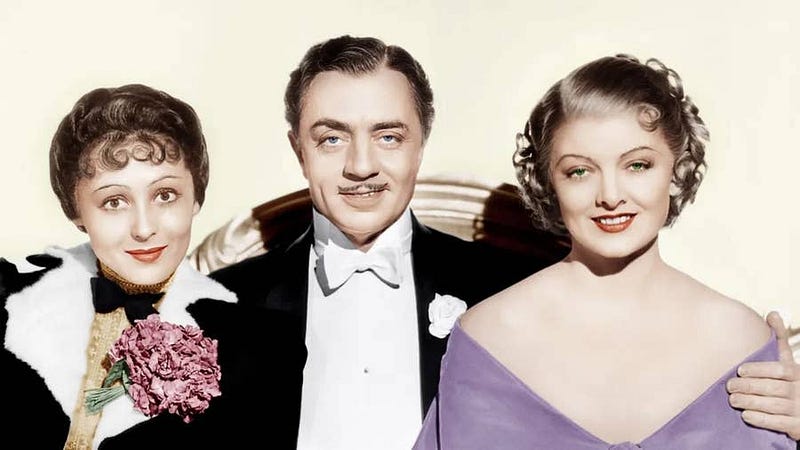
- Director: Robert Z. Leonard
- Featuring: William Powell, Myrna Loy, Luise Rainer
The Great Ziegfeld is a hit musical drama featuring the darling couple of the age: Myrna Loy and William Powell. Acclaimed at the time as the greatest musical biography in history, it remains a foundational piece of musical film that helped shape the genre. Loy and Powell, already starring on screen together in other series (like The Thin Man series) shine in all their interactions.
1937: Snow White
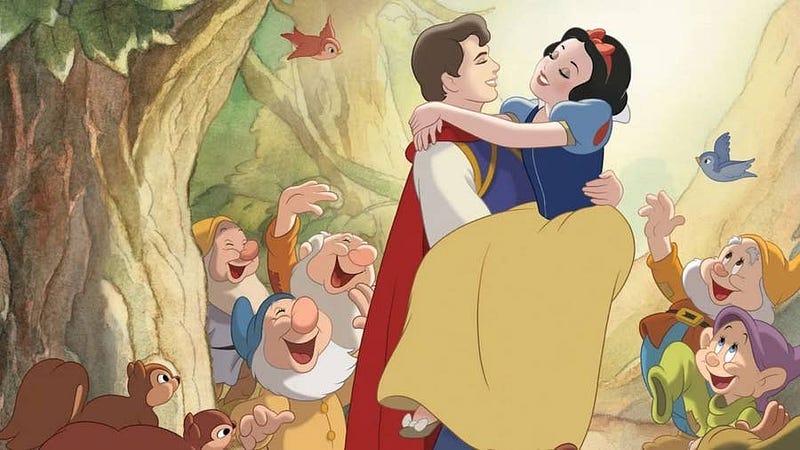
- Director: David Hand
- Featuring: Adriana Caselotti, Lucille La Verne
Snow White and the Seven Dwarfs changed the world of animated film forever after, proving that cartoons could not only be successful in feature form, but could be phenomenal at pulling in the audiences. The film was made possible by unique advances in animation fostered by Walt Disney, as well as by the individual talents of thousands of men and women, including Helen Ogger an animator and inker of unparalleled skill who is responsible for creating Snow White’s unique pink blush one cell at a time.
1938: The Adventures of Robin Hood
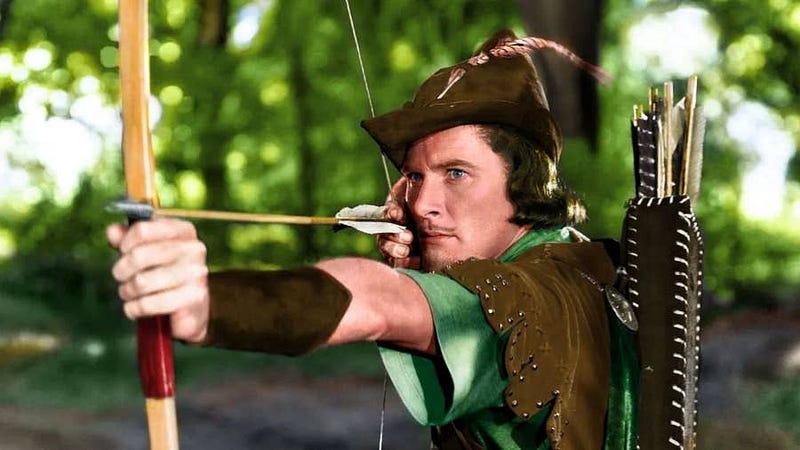
- Director: Michael Curtiz, William Keighley
- Featuring: Errol Flynn, Olivia de Havilland, Basil Rathbone, Claude Rains, Una O’Connor
The Adventures of Robin Hood gave the world a swashbuckling adventure like no other, leading to millions of young people suddenly discovering a deep passion for the art of fencing and the glamour of resisting corruption. Though not the first tale of Robin Hood to make it to the silver screen, this version did set the tone for all that came after.
1939: The Wizard of Oz
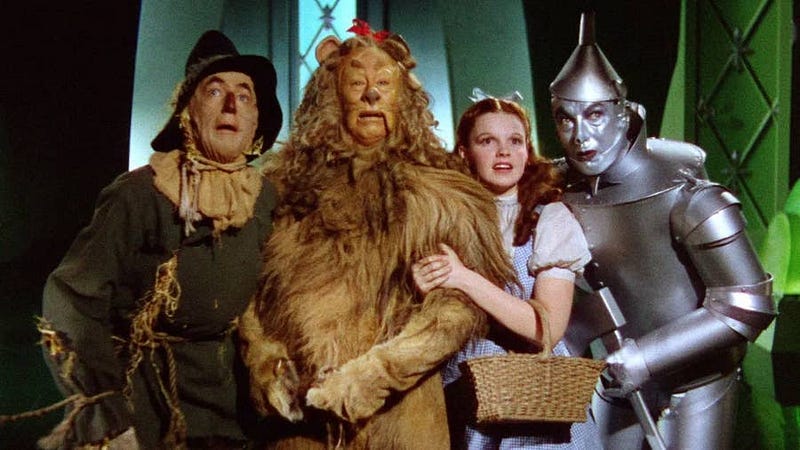
- Director: Victor Fleming
- Featuring: Judy Garland, Frank Morgan, Ray Bolger, Bert Lahr, Jack Haley
The Wizard of Oz is, according to the Library of Congress, the most seen film in all history. A modest commercial success upon its release, and a blazing critical success then and forever after, this sprawling tale of the fantastic journey Dorothy takes into the land of Oz transformed the landscape of cinema in vital ways, and even more impressively altered forever the landscape of American cultural mythology.
Many film historians call this the greatest year in film history, with a host of incredible releases including Gone With the Wind and Mr. Smith Goes to Washington, as well as MGM’s first successful animated character, and the sprawling film series success of Nigel Bruce and Basil Rathbone’s on screen portrayal of Dr. Watson and Sherlock Holmes.
1940: The Great Dictator
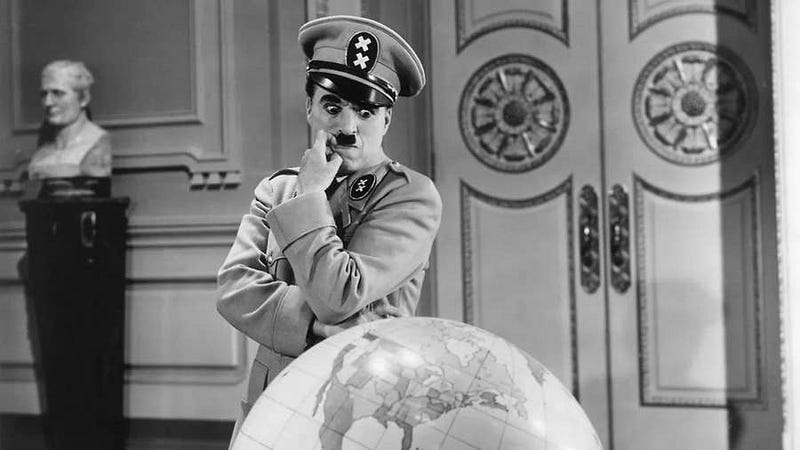
- Director: Charlie Chaplin
- Featuring: Charlie Chaplin, Paulette Goddard
The Great Dictator is probably the greatest piece of 20th century film satire, and features one of the most iconic and moving monologues in all film history. Chaplin’s first full-sound film proved that he could move as deftly within the landscape of “talkies” as he could the old silent era, landing him in the position of being the only silent actor to break through in both climes.
A tour de force that took aim at fascism well before the United States came into direct conflict with Nazi Germany, and while significant support for Nazi Germany still bubbled beneath the surface of American politics. It’s a poignant and gripping comedy that aches with the dramatic tension of its subject matter, brought to life in such a brilliant manner by Chaplin’s grace and ever-relevant wit.
1941: Citizen Kane
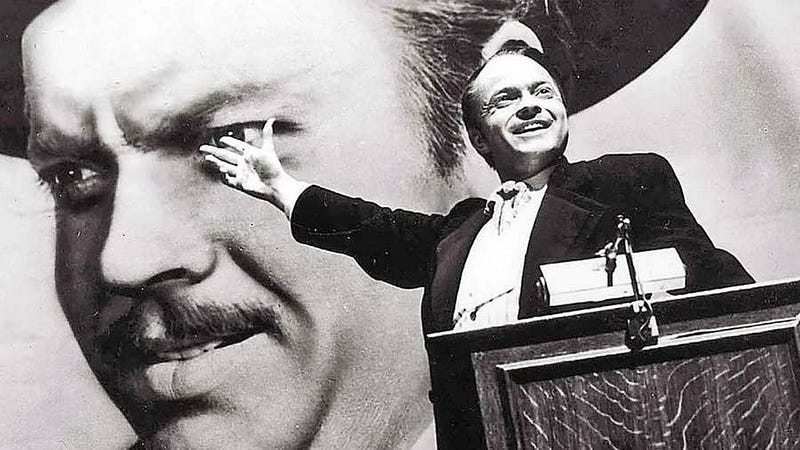
- Director: Orson Welles
- Featuring: Orson Welles, Joseph Cotten
Citizen Kane is a modern American story about a man named… Kane. Charles Foster Kane. In the middle of an age of growing war-fever (approaching the attack on Pearl Harbor), Citizen Kane arrived amid a slew of war-obsessed films. Orson Welles’ masterpiece offered something different, something enigmatic, and twisted, and powerful, and vague; it offered changes to the entire film genre, from technical changes like the use of deep focus, to a whole different (and complex) style of visual storytelling.
1942: Casablanca

- Director: Michael Curtiz
- Featuring: Humphrey Bogart, Ingrid Bergman
Casablanca has become known as one of the greatest films of all time, a romantic melodrama that captured something essential about the Golden Age of Hollywood, with its action, cast of remarkable actors, and ability to capture the emotional zeitgeist of 1940s America.
1943: For Whom the Bell Tolls

- Director: Sam Wood
- Featuring: Gary Cooper, Ingrid Bergman
For Whom the Bell Tolls brought to life Ernest Hemmingway’s novel of the same name, and the stars were themselves handpicked by Hemmingway for their roles. It tells the story of an American International Brigades volunteer fighting for the socialist cause against the Fascists, who falls in love with a charismatic young guerrilla fighter. In the middle of a sea of pro-war films, this one managed to play out more subtlety and wit than its competition.
1944: Double Indemnity

- Director: Billy Wilder
- Featuring: Fred MacMurray, Barbara Stanwyck
Double Indemnity offered one of the best noir stories of the 40s, slipping through beneath many critics’ noses while flat stars like Going My Way gathered up the Academy Awards and the bulk of popular attention. This tale, a dark and twisted riot of murder and mayhem, a story cleverly written and filled with delicious, slightly over-the-top acting, provided something ultimately far more lasting.
1945: The Lost Weekend

- Director: Billy Wilder
- Featuring: Ray Milland, Jane Wyman
The Lost Weekend was a powerful noir film in the golden age of noir, a tale of the darkest side of humanity… and a film that ignited so much anger in the alcohol industry that they lobbied to have it shelved (as did, ironically, temperance leagues).
1946: A Matter of Life and Death

- Director: Michael Powell, Emeric Pressburger
- Featuring: David Nivan, Roger Livesey, Raymond Massey
A Matter of Life and Death was a post-war fantasy that captured a surreal, semi-satirical, snapshot of the world’s feeling after World War II. A dashing airman falls to his death, taking his last conversation with a beautiful American switchboard operator with him to the beyond… only, no angel comes to collect his soul. Instead, he is offered the chance to prove his love for this woman he has never met, in exchange for which he will be granted a second chance at life. With breathtaking cinematography and stunning special effects for the era, this Technicolor masterpiece paints a picture of love more powerful than death, and tapped into the immense feeling of loss felt by so many after that terrible conflict.
1947: The Secret Life of Walter Mitty
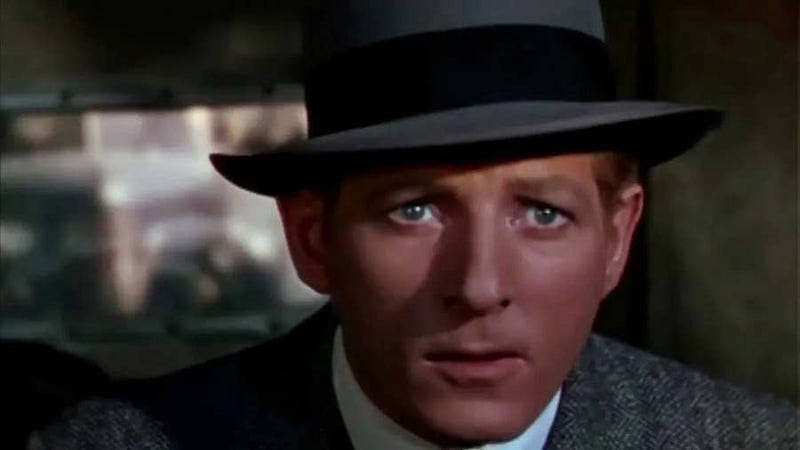
- Director: Norman Z. McLeod
- Featuring: Danny Kaye, Virginia Mayo, Boris Karloff, Fay Bainter, Ann Rutherford
The Secret Life of Walter Mitty, based on a 1939 novel, brought the inner world of a pulp storywriter to life — an inner world at odds with his meek and weary existence. Chance, love, and his incredible imagination might just be the way out of an existence rule by the whims of others, and Walter Mitty’s daydreams might even stop a conspiracy at the same time.
1948: Bicycle Thieves
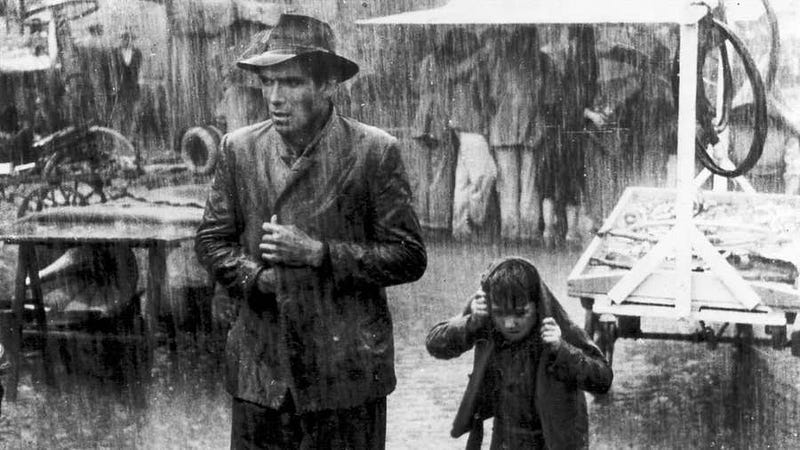
- Director: Vittorio De Sica
- Featuring: Lamberto Maggiorani,
Bicycle Thieves was a look into the harsh world of Post WWII life on the European continent through the eyes of Antonio, a man desperate for work to support his family. When his bicycle is stolen, and along with it his only hope of caring for his family, Antonio sets out in search of the thief, encountering the hostility of his fellow human beings, and his own weaknesses, along the way. Considered one of the greatest masterpieces of the era, this film is gripping and heart-wrenching in the most powerful of ways.
1949: The Third Man

- Director: Carol Reed
- Featuring: Joseph Cotten, Alida Valli, Orson Welles, Trevor Howard
The Third Man is a powerful noir film now considered one of the greatest British films ever made. When Holly Martins, a pulp writer coming to post-war Vienna, finds out that Harry Lime, the friend he came to meet, has died under suspicious circumstances, he elects to carry out an investigation himself. But what really happened to Harry Lime, and will Holly find out before the seedy streets of post-war Vienna drag him down?
1950: Sunset Blvd.
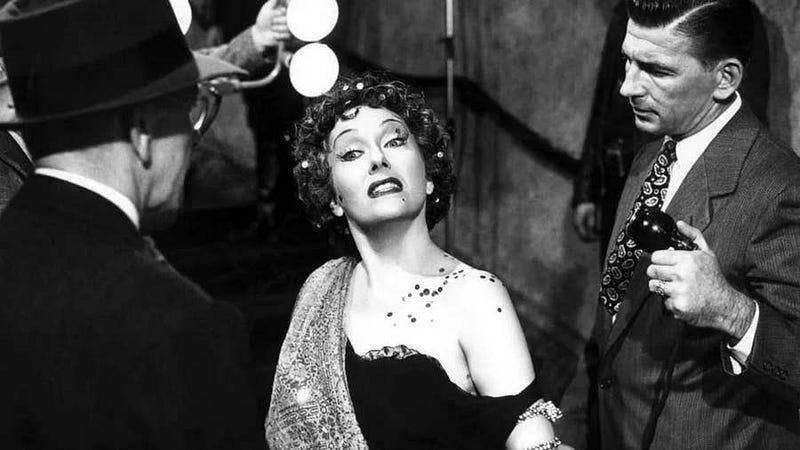
- Director: Billy Wilder
- Featuring: William Holden, Gloria Swanson, Erich von Stroheim, Nancy Olson, Fred Clark, Lloyd Gough, Buster Keaton, Jack Webb
Sunset Blvd. was a powerhouse noir film that linked the worlds of the classic silent films and the fast-approaching modern age. It’s a dark and twisted tale, but one that captured something important about the changing landscape of the Hollywood film scene — and, therefore, society as a whole.
Note: 1950 was an amazing year for film, and there are so many greats that I skipped over. My tie for this slot is certainly Rahsomon, directed by the incredible Akira Kurosawa.
1951: The Day the Earth Stood Still
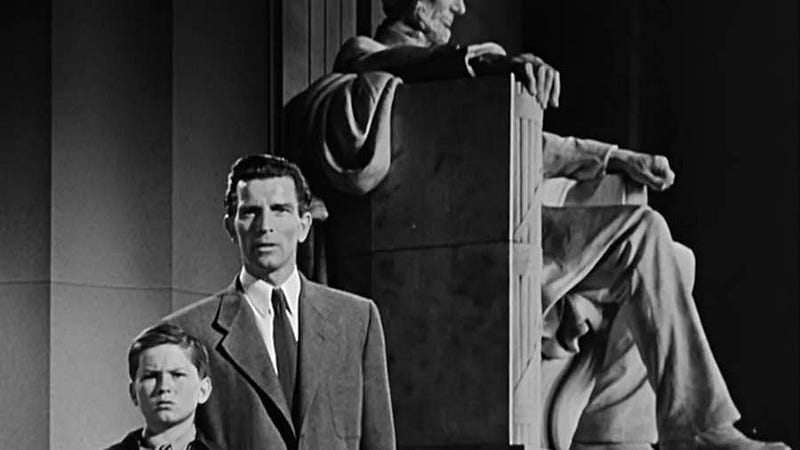
- Director: Robert Wise
- Featuring: Michael Rennie, Patricia Neal
The Day the Earth Stood Still offered the world a big-budget science fiction experience and a cautionary tale of self-serving politics, warfare, and humanity’s reliance on weapons of mass destruction. Humanity’s fear, says the film, will be its undoing. In the best sci-fi style, this amazing movie offered a far more poignant contemplation of the early Cold War era than many others of its time.
1952: The Greatest Show on Earth
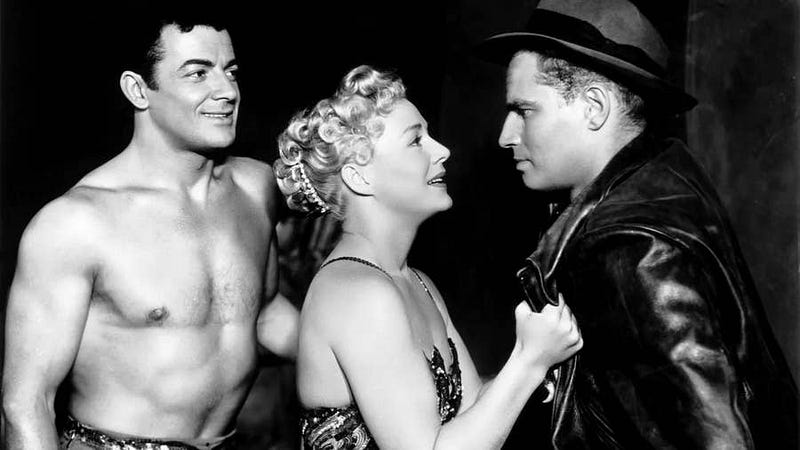
- Director: Cecil B. DeMille
- Featuring: Betty Hutton, Cornel Wilde, Charlton Heston, James Stewart
The Greatest Show on Earth is Cecil B. DeMille’s dream of keeping the magic of the circus alive, his belief that the whole world could be inspired to feel magic by the incredible feats of acrobatics and comedy found beneath the big top. The story is there to hold a moviegoer’s audience, carrying tension as the circus tries to stay afloat in the post-WWII economy, but the true joy of the film is the circus itself, which is shown in all its magnificent pageantry.
1953: Ugetsu

- Director: Kenji Mizoguchi
- Featuring: Machiko Kyō, Mitsuko Mito
Ugetsu brought Kenji Mizoguchi into International light for his directorial brilliance, the film’s otherworldly themes blended with powerful social commentary of what happens to women when war sweeps a land. A stark piece of antiwar cinema, it’s a brilliant work that still shines today.
1954: Rear Window
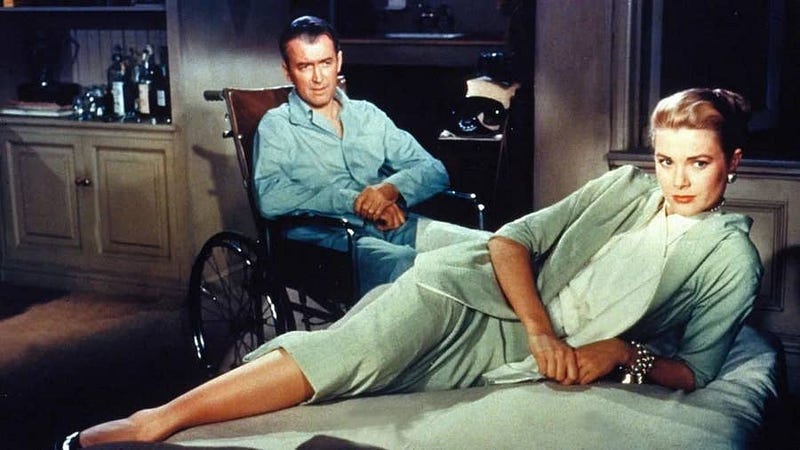
- Director: Alfred Hitchcock
- Featuring: James Stewart, Grace Kelly
Rear Window is one of Hitchcock’s great masterpieces, a blend of deep suspense and human introspection. A tale of romance and dark secrets hidden behind the curtains of ordinary lives, Rear Window will rivet you to your seat and make you want to pull your window shade tight when the sun goes down.
1955: Marty
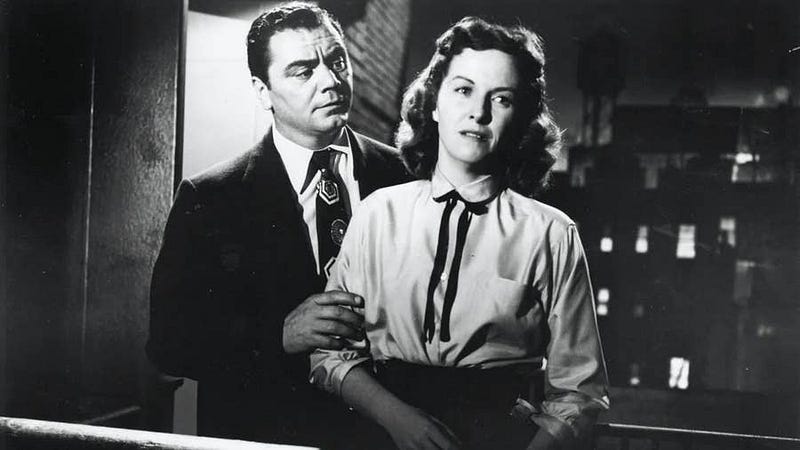
- Director: Delbert Mann
- Featuring: Ernest Borgnine, Betsy Blair
Marty is one of the most heartwarming romance tales around, diving into the heartbreak of feeling like you’re a reject from society, and the joy of finding someone who can see you for who you really are.
1956: La Strada
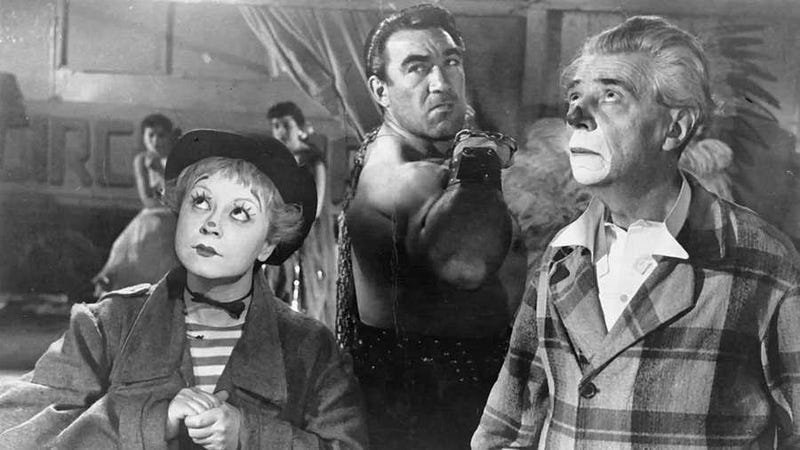
- Director: Federico Fellini
- Featuring: Giulietta Masina, Anthony Quinn, Richard Basehart
La Strada is one of the most powerful, heart-wrenching, and intense films you’re likely to ever see — but also one of the most powerful windows into the darkness and lights of human life. It’s a masterpiece of the cinema that everyone should see.
1957: The Bridge on the River Kwai
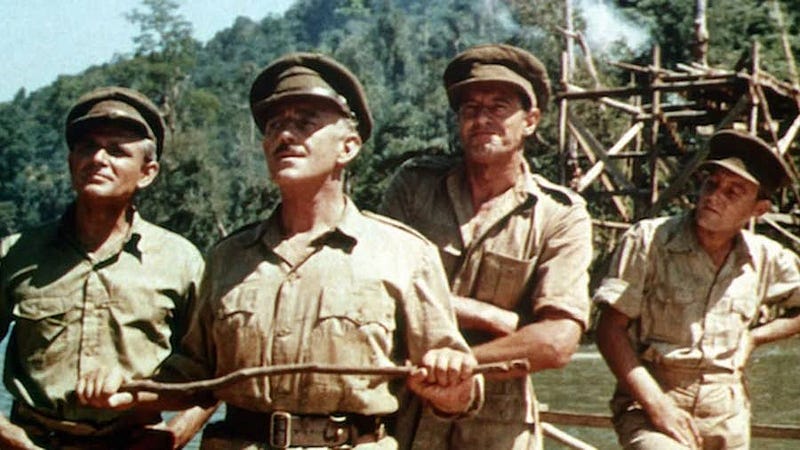
- Director: David Lean
- Featuring: William Holden, Alec Guinness, Jack Hawkins, Sessue Hayakawa
The Bridge on the River Kwai is one of the great prisoner of war films, an exploration of the madness of war and the sickness that can overtake men under both threat of death and the threat of leaving nothing of themselves behind.
1958: The Defiant Ones
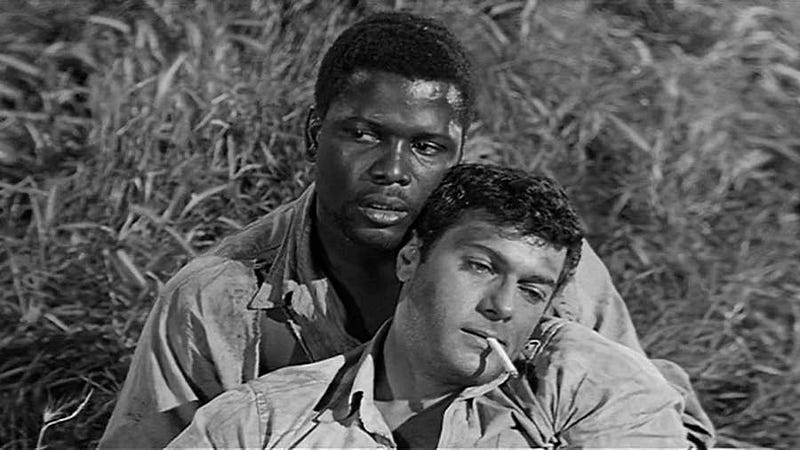
- Director: Stanley Kramer
- Featuring: Sidney Poitier, Tony Curtis
The Defiant Ones offers a powerful look into the concept of race at a time when racial tensions in the United States were as high as they had ever been — a time when a brutal and casual racism simmered beneath the surface veneer of popular culture and media. Chained together, a white prisoner and a black prisoner escape, only to find out that the chains binding them are deeper and stronger than steel.
1959: Some Like it Hot
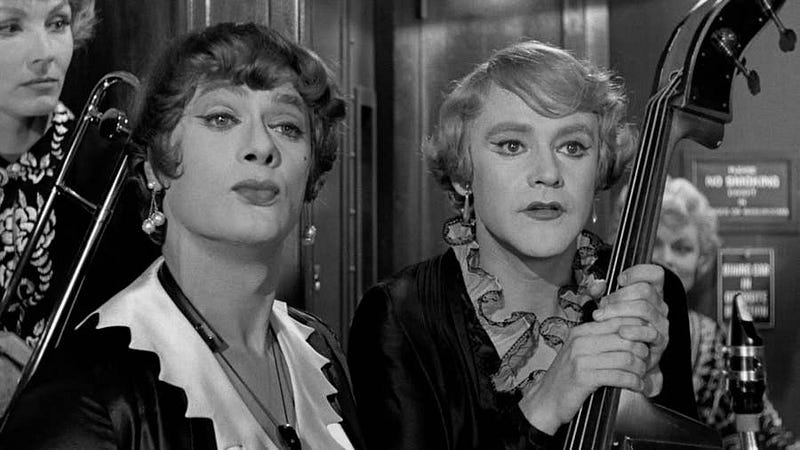
- Director: Billy Wilder
- Featuring: Marilyn Monroe, Tony Curtis, Jack Lemmon
Some Like it Hot was a piece of blockbuster comedic action that took the world of 1959 by storm. With Marilyn Monroe driving the heart and soul of the film in her usual “blonde bombshell” role, backed by the witty comedic subtlety of Curtis and Lemmon. The film is also notable as a major defeat of the already flagging “Hays Code” a morality code in United States cinema that tried to keep homosexuality, sex, and various supposedly “harmful” behaviors out of the limelight.
1960: The Apartment

- Director: Billy Wilder
- Featuring: Jack Lemmon, Shirley MacLaine
The Apartment stole the hearts of moviegoers everywhere with its warm-hearted central theme, but Wilder’s fantastic film also shot through the heart of the corporatocratic ladder’s effect on human lives. This message, carried within a melodrama romance, hit harder than some films that went in for a straight punch.
1961: Breakfast at Tiffany’s
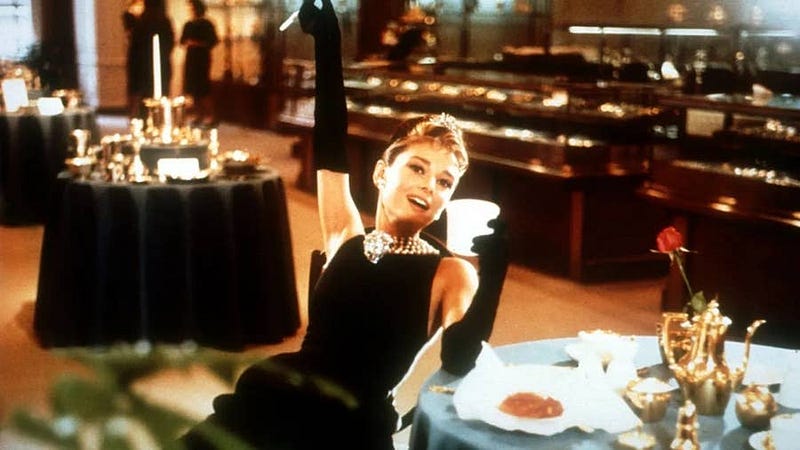
- Director: Blake Edwards
- Featuring: Audrey Hepburn, George Peppard
Breakfast at Tiffany’s is notable for capturing a certain 60s vibe that is so entirely different from the films of the 50s; it's a glitzy, glamorous film that doesn’t follow all the usual romance story conventions, perhaps because the original source material was a tragedy. It’s Audrey Hepburn who makes this film gold, however, delivering a powerful performance that can’t be forgotten.
Note: So many strong films this year! Some runner-ups, for me, include the shatteringly dark Two Women, the whimsical 101 Dalmatians, and the powerful war film The Guns of Navarone.
1962: Lawrence of Arabia
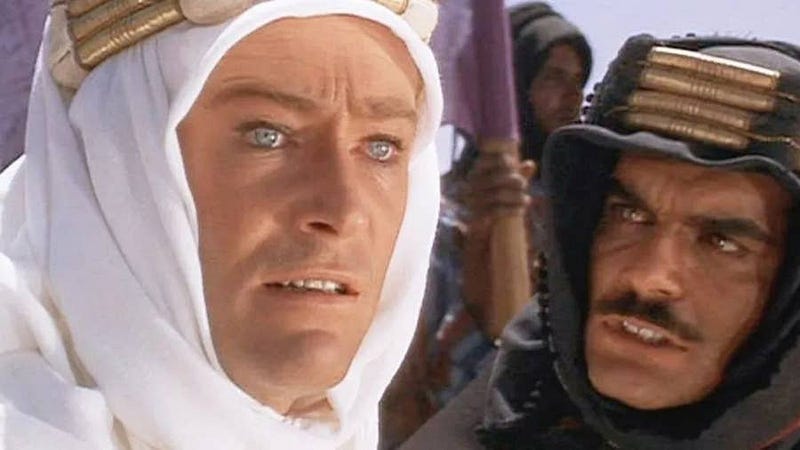
- Director: David Lean
- Featuring: Alec Guinness, Anthony Quinn, Omar Sharif, Peter O’Toole
Lawrence of Arabia is a cinematic tour de force unlike any other, a modern myth, a historical drama that breathes within the tension of war, the power of belief, and the very concept of heroism. Incredible cinematography and superb acting make this one stand out forever.
1963: Tom Jones
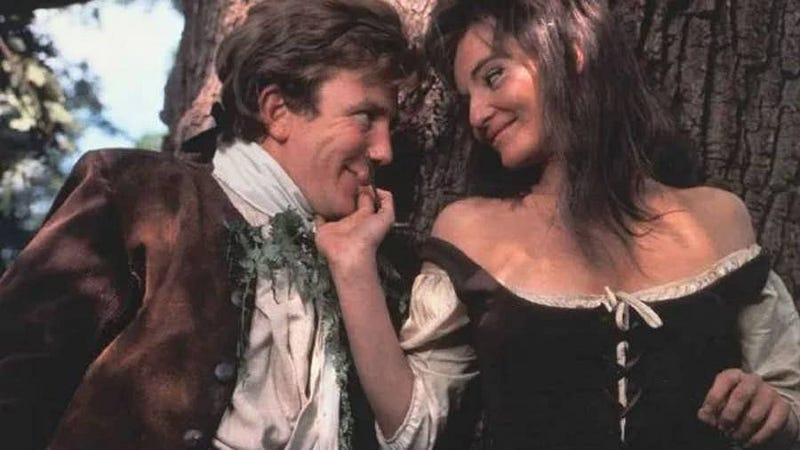
- Director: Tony Richardson
- Featuring: Albert Finney, Susannah York
Tom Jones took raunchy period “dramady” to a whole new level, with evocative English landscapes providing the backdrop to a madcap tale of bawdy adventure and wistful dreaming. It feels quintessentially early-60s to me, a film that breaks the 4th wall and, at times, indulges in itself far too much — but it’s a window into the mind of an era and is too often forgotten on lists of this kind.
Note: We’re in the heyday of some classic works of genius, so picking one skips on so many like 8½, Cleopatra, and The Great Escape.
1964: Mary Poppins
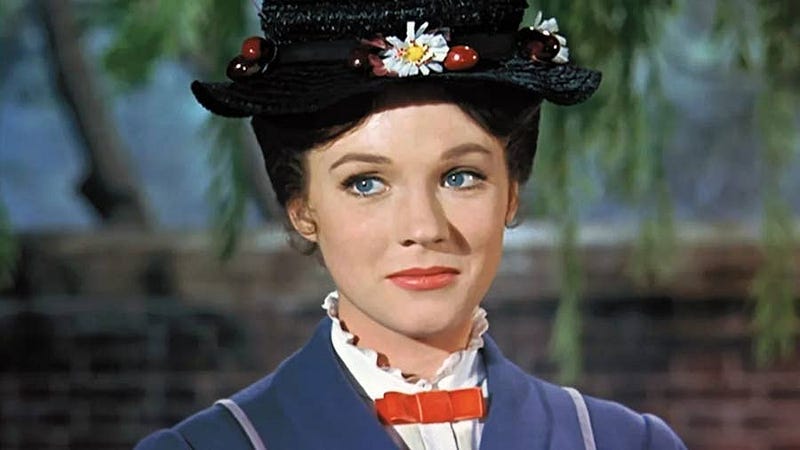
- Director: Robert Stevenson
- Featuring: Julie Andrews, Dick Van Dyke
Mary Poppins was pure musical gold, offering all of Andrews’ superb presence as a balm to capitalist ills and the importance of a little magic in everyone’s life. Pamela Lyndon Travers’ books came to life in a remarkable way through the Disney adaptation, and thanks to her involvement, the film retained a unique quality despite its Disneyification.
1965: The Sound of Music

- Director: Robert Wise
- Featuring: Julie Andrews, Christopher Plummer
The Sound of Music is one of my favorite films, remarkable because I’d somehow avoided watching it until just a year ago! Some of the golden age classics slip us by… but this one needs to be seen to be understood. It offers so much more than just a wonderful romance and an unforgettable soundtrack; The Sound of Music is a dream of opposition to brutality, small-mindedness, and the threat of totalitarianism. It suggests that art, and love, and sheer vibrant joy of living can be antidotes to the ills of society and, should darkness come anyway, those lights of art and human happiness are what will keep us striving for a better end.
1966: The Spy Who Came In from the Cold
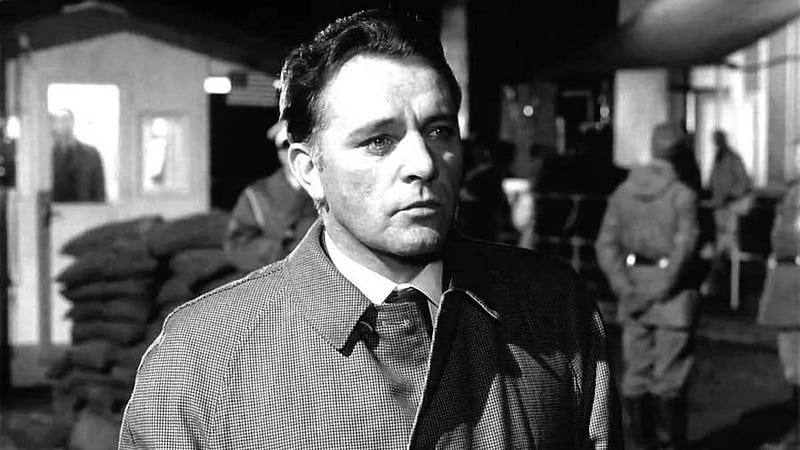
- Director: Martin Ritt
- Featuring: Richard Burton, Claire Bloom, Oskar Werner
The Spy Who Came In from the Cold is one of the best spy films ever made, based on the novel of the same name by John le Carré. In an era of normalized color productions, a black and white film like this captures the world with a different eye, and it dives deep into the psychology of spywork and twisted nature of espionage.
1967: The Graduate
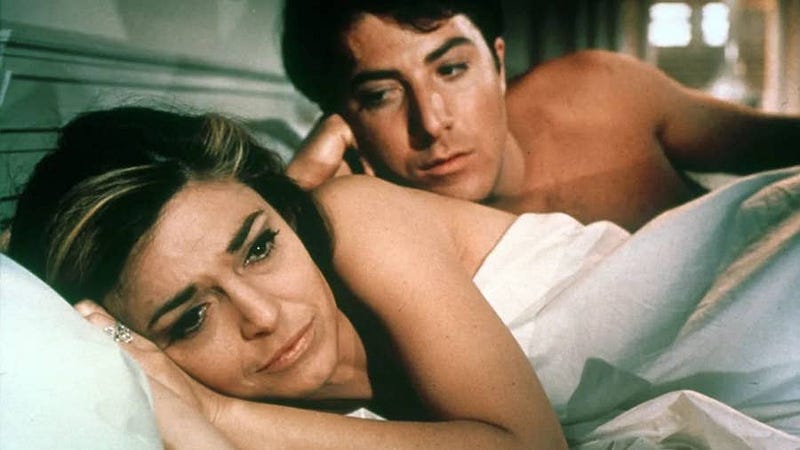
- Director: Mike Nichols
- Featuring: Anne Bancroft, Dustin Hoffman, Katharine Ross
The Graduate is a film that has managed to not only age well, but become even more deeply poignant as the decades have slipped by. Not only is Dustan Hoffman superb, but the excellent cinematography and the gorgeous soundtrack make it a winner for the ages.
1968: 2001: A Space Odyssey

- Director: Stanley Kubrick
- Featuring: Keir Dullea, Gary Lockwood
2001: A Space Odyssey changed film forever, providing a new landscape for cinema as a whole while simultaneously proving to a recalcitrant ivory-tower elite, and the general public, that science fiction mattered. Known for being both profound and timeless, this film dared us to see the world in new and unexpected ways, bringing cinema into the future.
1969: Oh! What a Lovely War
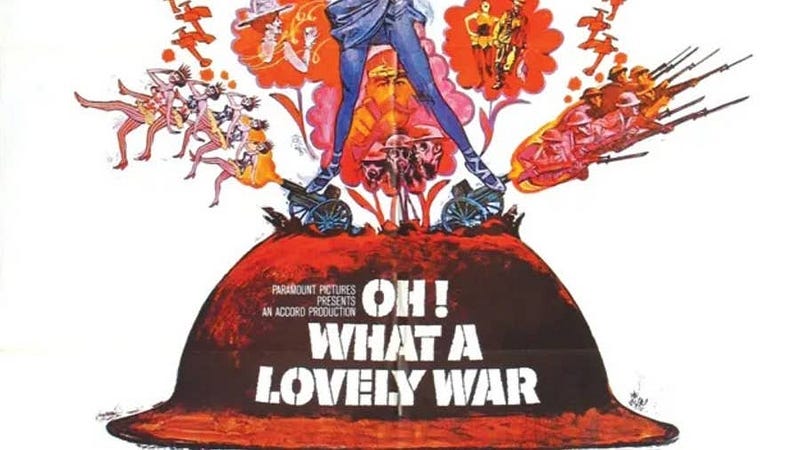
- Director: Richard Attenborough
- Featuring: Maggie Smith,
Oh! What a Lovely War was a shining satire of World War I and the failures that surrounded it, and other major conflicts of the 20th century. It’s a painfully tragic allegory of war and political fakery that governments use to bring people into the arms of the army. Considering the disastrous mid-century conflict in Vietnam, this was a timely film, and heralded the beginning of an age of war-farces that explored through a tragicomic lens a darker side to service than popular culture had previously entertained.
1970: M * A * S * H
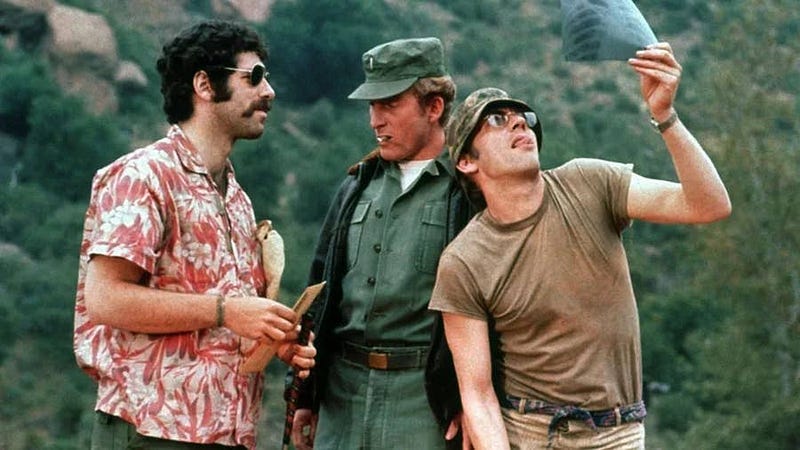
- M * A * S * H
- Director: Robert Altman
- Featuring: Donald Sutherland, Elliott Gould
M * A * S * H gave the world a dark, comedic look at war unlike any other. Based on Richard Hooker’s 1968 novel MASH: A Novel About Three Army Doctors, MAS*H proved a blockbuster hit that would go on to become the beloved series of the same name.
1971: Harold and Maude
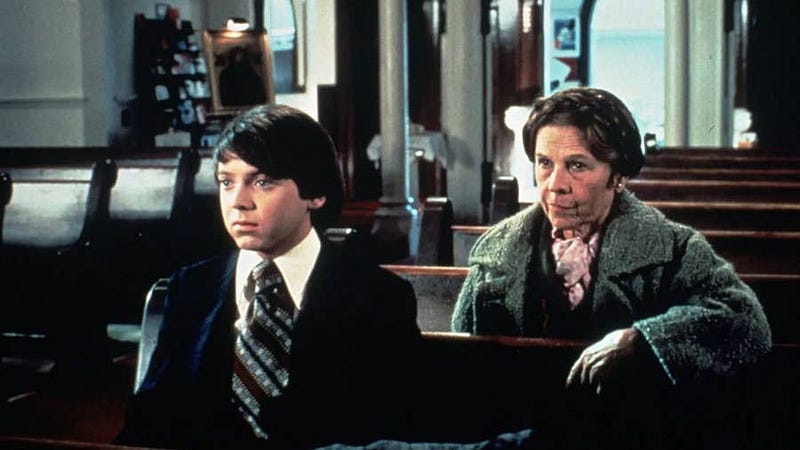
- Director: Hal Ashby
- Featuring: Ruth Gordon, Bud Cort
Harold and Maude is a film about the inescapable certainty of death, the uncertainty of life, and all the joys that come from simply living with the unknown. It’s a hilarious film, dark and wistful, happy and wrenching; colorful in all the best ways and splendid in a way that no other film of 1971 managed to be.


